Abstract
The dependence of the spin-lattice relaxation time in the rotating frame (T1rho) on radio frequency (RF) field strength and temperature has been studied for agarose gels in order to investigate molecular motion. The results indicate the presence of slow motions with a correlation time of ca. 5-10(-6) s at room temperature. This interaction is responsible for the short spin-spin relaxation times (T2) for water protons in agarose gels and is ascribed to firmly bound water. The fraction of bound water is estimated to about 0.003 for a 7.3% agarose gel. The motion of the more mobile protons in agarose-water systems can not be characterized by single correlation time. This fraction is presumably composed of water in different motional states and some of the agarose hydroxyl protons. Higher mobilities are the most common.
Full text
PDF
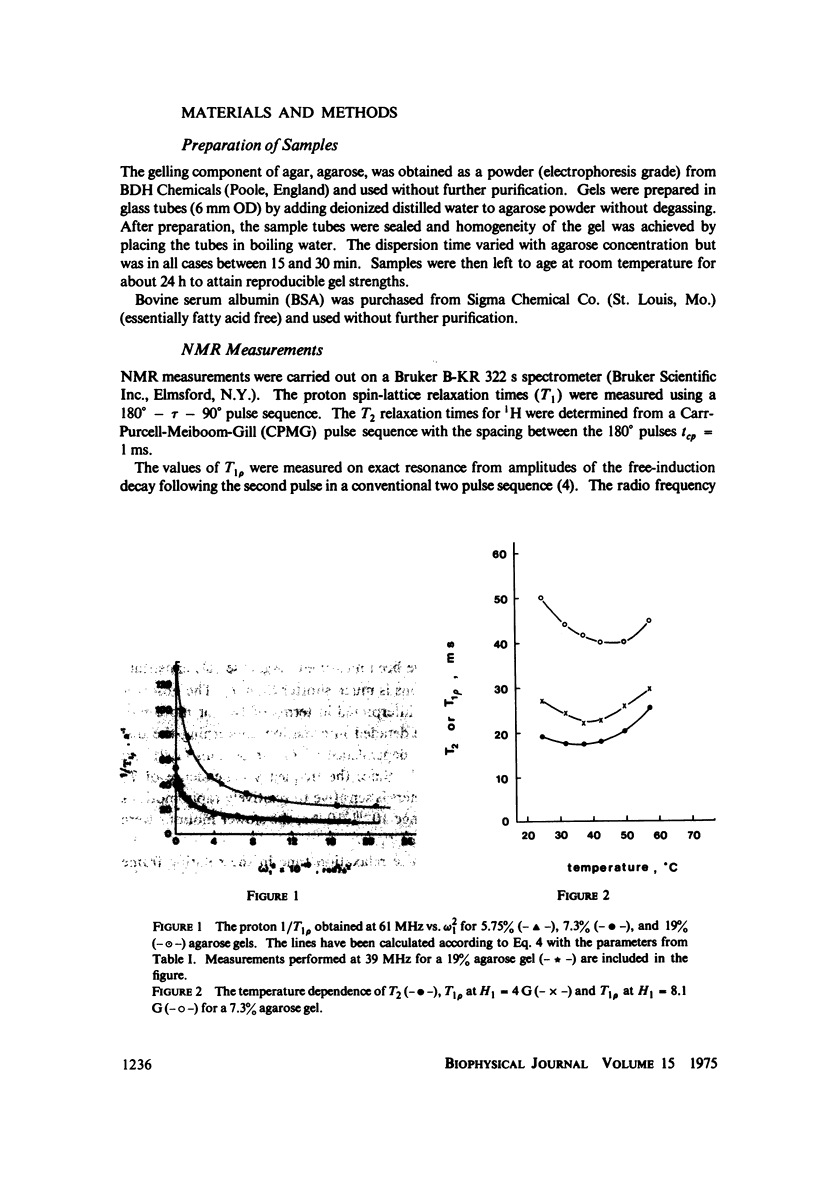
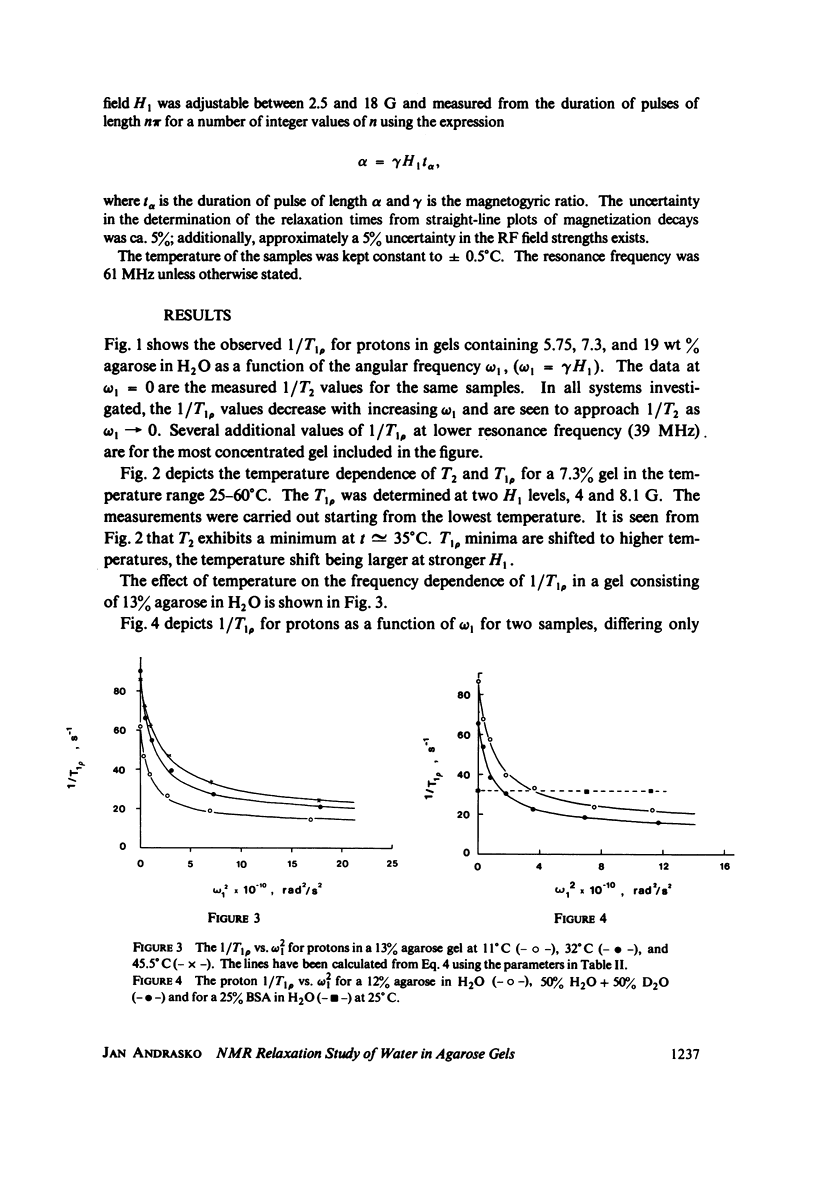
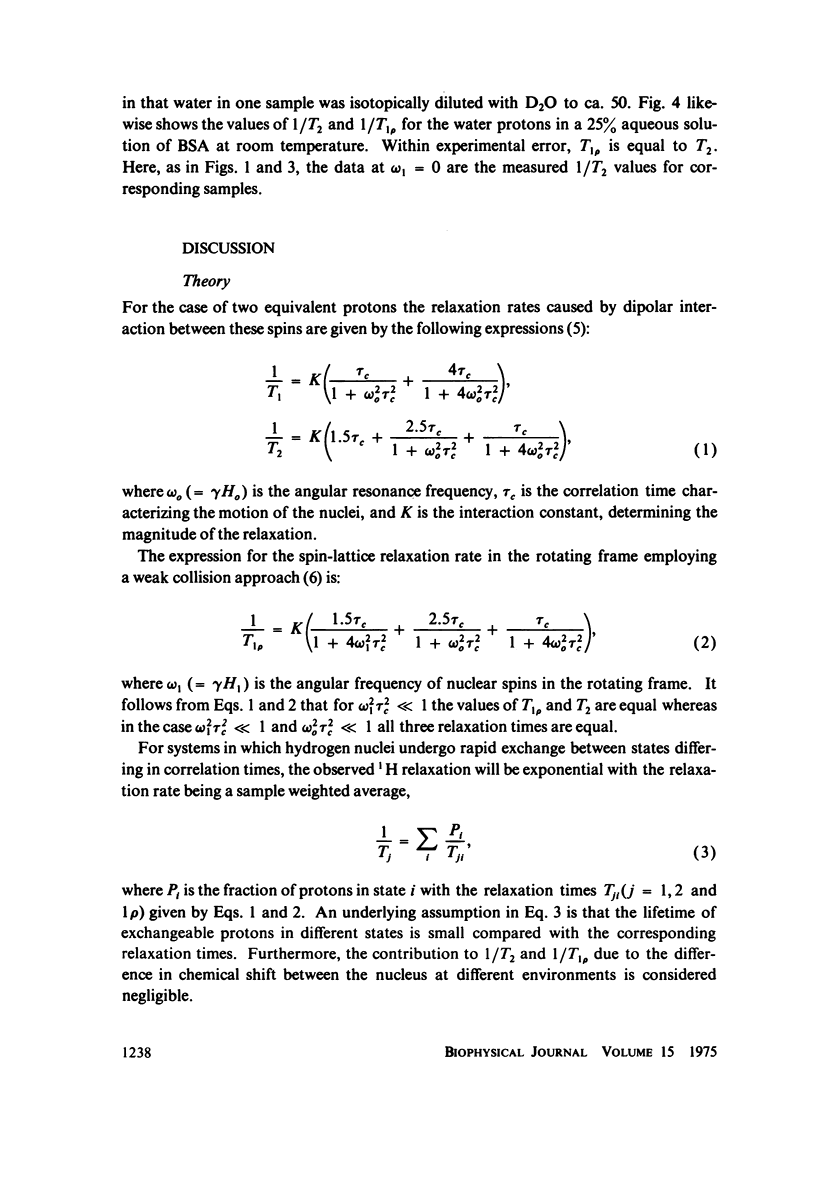

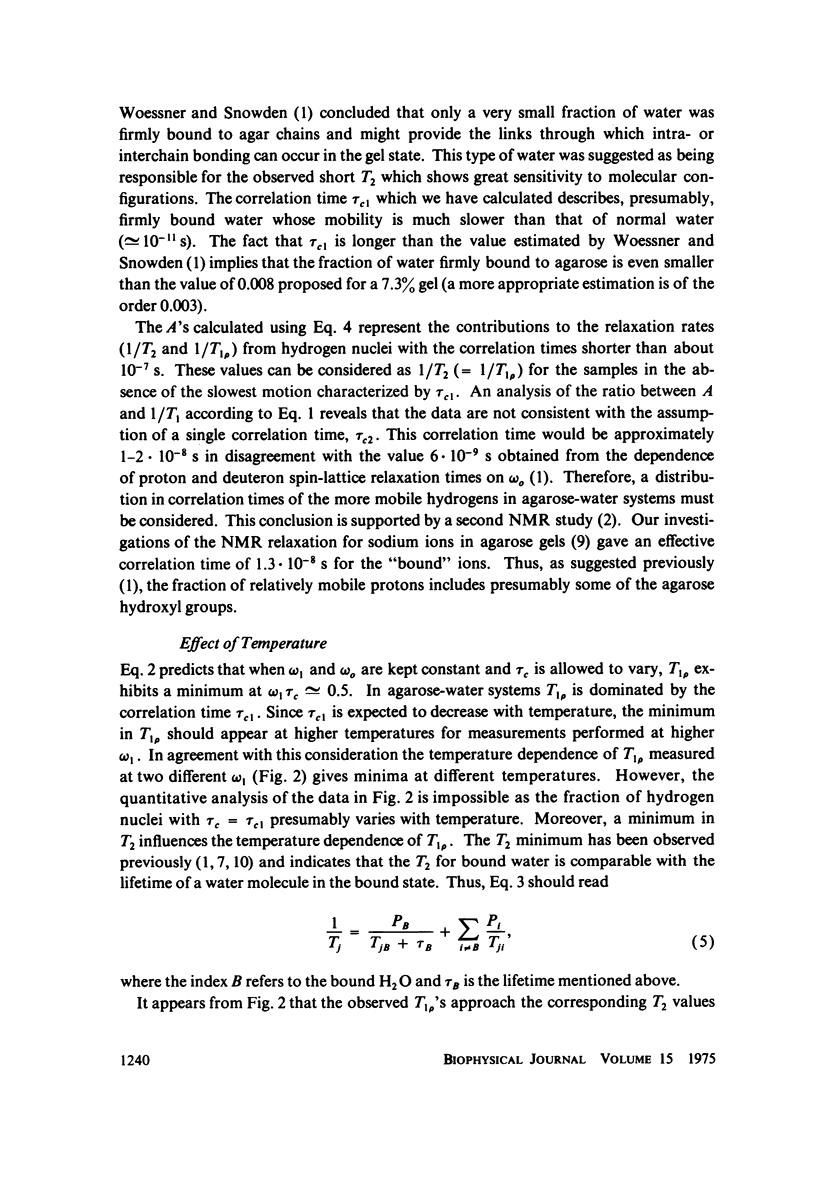
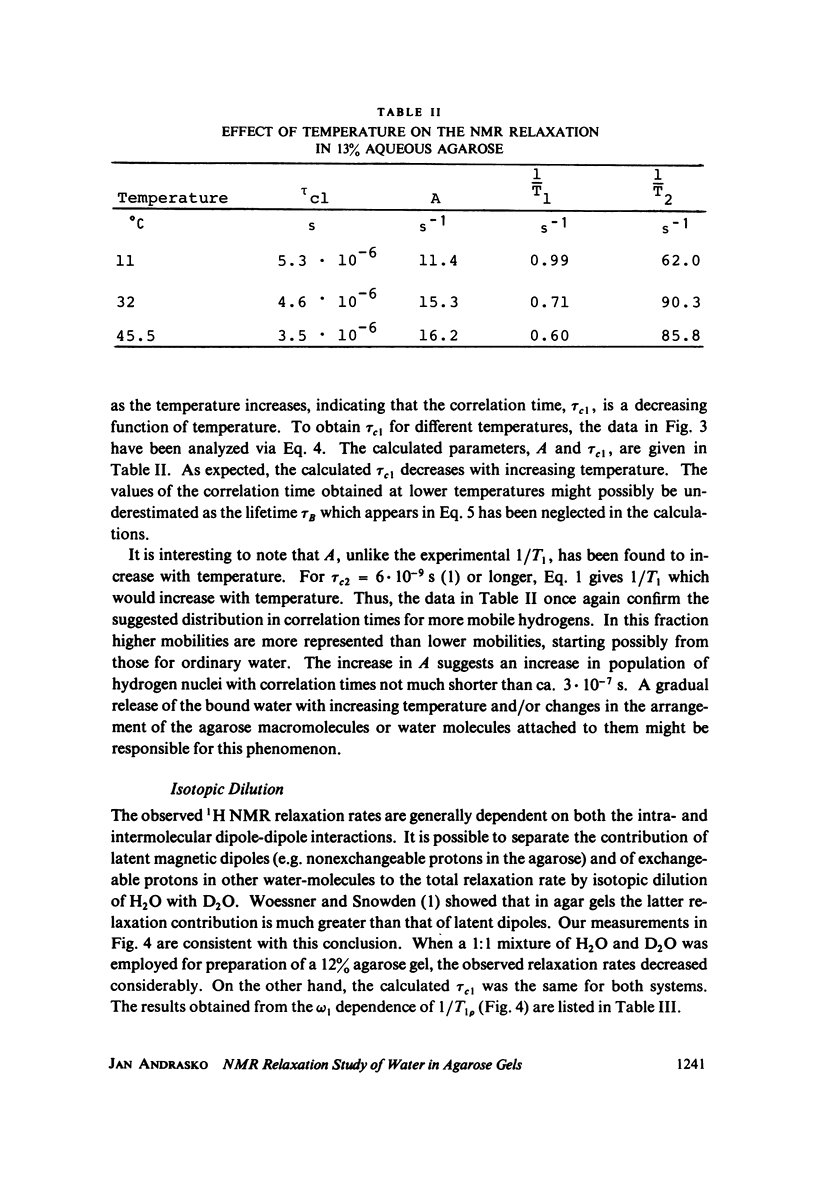
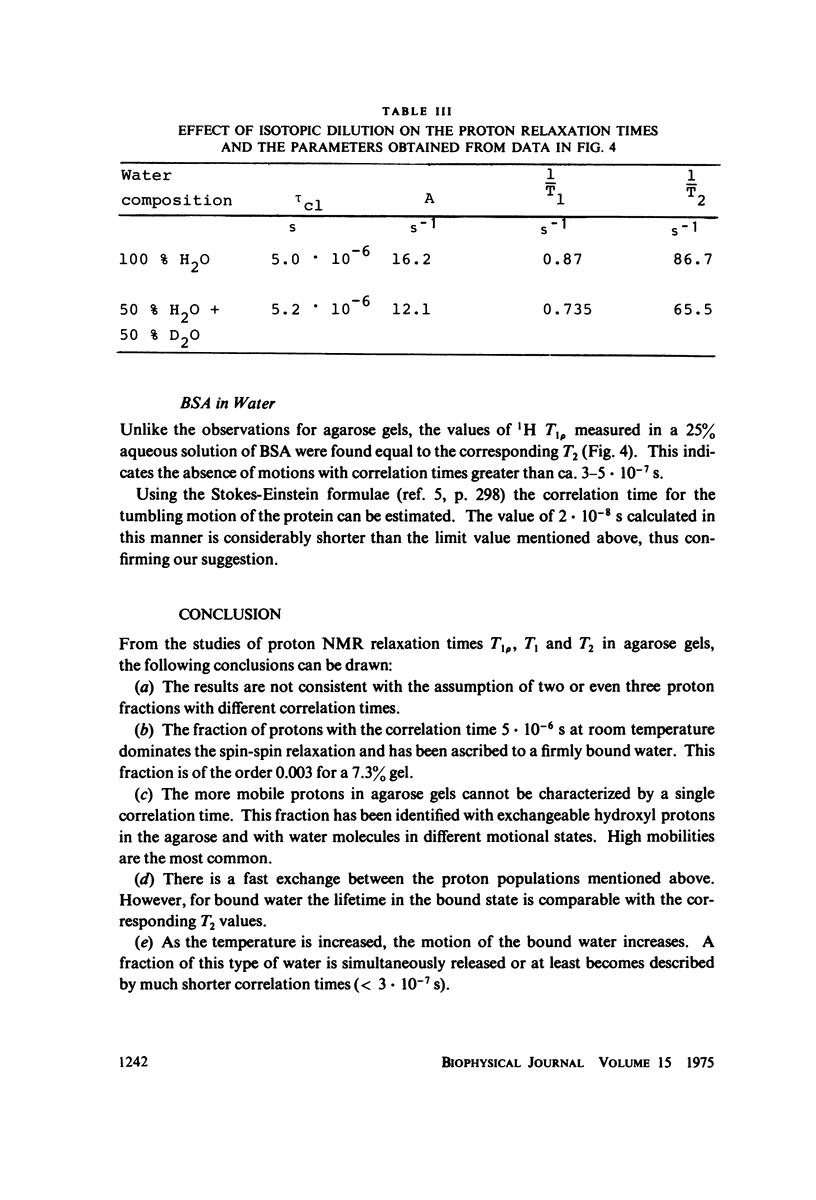
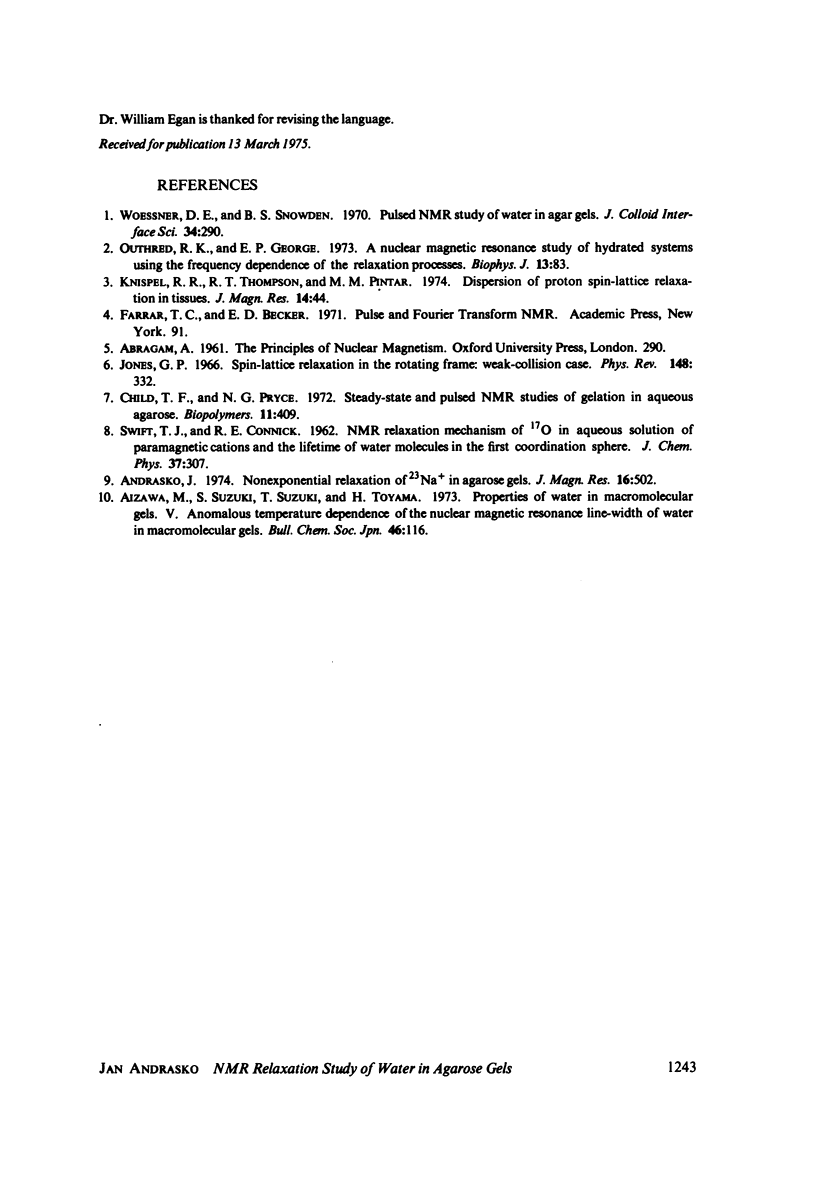
Selected References
These references are in PubMed. This may not be the complete list of references from this article.
- Outhred R. K., George E. P. A nuclear magnetic resonance study of hydrated systems using the frequency dependence of the relaxation processes. Biopolymers. 1973 Feb;13(2):83–96. [PubMed] [Google Scholar]


